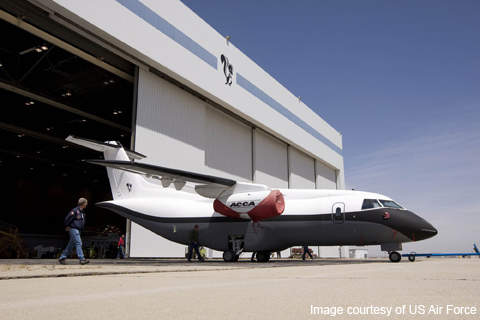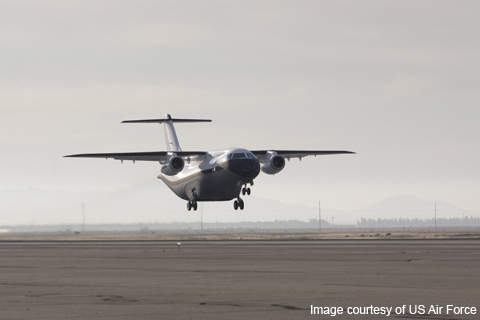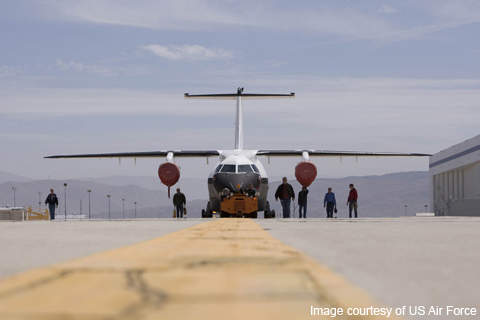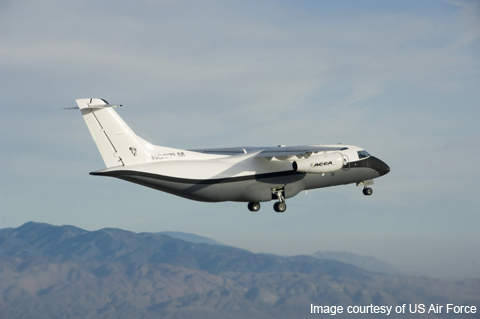When the United States Air Force Research Laboratory (AFRL) ordered the advanced composite cargo aircraft (ACCA), it was looking to demonstrate a full-scale, certified aircraft built of composite manufacturing process.
The main purpose of ordering the aircraft was to confirm the application of these advanced aspects in reducing the structural weight and cost of future military transport aircraft types. The project was part of the ten-year research and development investment known as the composite affordability initiative, led by the AFRL.
Advanced Composite Cargo Aircraft programme
In October 2007, the AFRL awarded the phase II contracts of the ACCA flight demonstration to Lockheed Martin for about $49.1m and Aurora Flight Sciences for about $46.85m, which had to jointly build an X-plane-type aircraft and flight-demonstrate the same. The contract price also included $1.99m for design by Aurora Flight Sciences.
Skunk Works, one of Lockheed Martin’s advanced development programmes that aims at building lighter and more durable transport aircrafts using advanced composites, was selected for building the ACCA.
Successful ACCA flight demonstration
The first flight demonstration of the ACCA took place on 2 June 2009 at US Air Force Plant 42 in Palmdale, California, at the Wright Research Site. The ACCA was designated the X-55 by Lockheed Martin in October 2009.
More than 600 sensors and accelerometers were employed in the test aircraft to measure structural stresses in order to evaluate the technological reliability.
After the aircraft climbed to an altitude of approximately 10,000ft, the two-pilot crew conducted a series of airspeed, stability and control tests throughout the aircraft to see how the ACCA performed at varying speeds, altitudes and attitudes. The demonstration lasted for about 87 minutes.
AFRL was assisted in the test project, by the Nasa Dryden Flight Research Center, and AVCRAFT. Nasa helped to streamline the test preparations while AVCRAFT, the maintainer of the Dornier 328J, supported the aircraft subsystems.
Although the demonstration was expected in late 2008 to early 2009, during fabrication of the composite fuselage, insufficient bond of the skin on the lower fuselage required fabrication of a second fuselage, leading to a delay.
Design of the Advanced Composite Cargo Aircraft
The ACCA was designed as a modified version of the Dornier 328J. The major design changes included replacement of the fuselage aft of the crew station and the vertical tail of the Dornier aircraft, and use of advanced composite materials. The high-wing Dornier jet was chosen in order to complete the requisite tasks at lower costs.
The aircraft’s fuselage width was increased from 2.41m (7.9ft) to 3.175m (10.4ft). The fuselage is 16.8m (55ft) long and 2.74m (9ft) in diameter when attached to the existing nose section. Resembling a canoe, the nearly oval fuselage’s upper and lower halves were bonded to circular frames. Featuring an enlarged cargo door and cargo ramp, the stronger and wider fuselage was designed to accommodate two military standard 463L pallets. The design excluded the use of traditional fasteners like rivets, making the composite structure inherently aerodynamic.
Advanced prototyping and composite technologies were used in the aircraft, and the design included super-lightweight and super-strong composite materials fabricated by out-of-autoclave curing.
Using expensive autoclaves that use a combination of heat and high pressure, the large composite sections in the ACCA were formed, cured and bonded together in room-sized ovens, minimising the part count. The reduction in parts further reduces the design and manufacturing complexities.
While the original Dornier 328J had 3,000 metallic parts and 30,000 mechanical fasteners, Lockheed Martin reduced the same, by almost 90% to 300 parts and less than 4,000 fasteners. Integrally stiffened skin could be found in the vertical tail.
The fuselage of Dornier 328J is made of aluminium alloys. Use of advanced composites in the fuselage and empennage of the aircraft could not only make the craft lighter and less expensive but also supposed to give more durability and ease in maintenance. Furthermore, since fewer parts are used, corrosion and metal fatigue issues will be significantly reduced, resulting in easier maintenance. In addition, the lighter weight of the aircraft would mean an increased cargo capacity.












